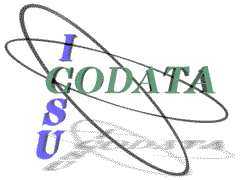Senckenberg Research Institute and Museum, Frankfurt
Botanical Garden and Botanical Museum Berlin-Dahlem
Senckenberg Research Institute and Museum, Frankfurt |
Botanical Garden and Botanical Museum Berlin-Dahlem |
TDWG 2000: Digitising Biological Collections
Taxonomic Databases Working Group, 16th Annual Meeting
Senckenberg Museum, Frankfurt, Germany, November 10-12, 2000
* IGR - Informationszentrum Genetische Ressourcen der ZADI - Zentralstelle für Agrardokumentation und -information, Villichgasse 17, 53177 Bonn, Germany
[Poster presentation]
Information systems on genetic resources have to cover a wide range of taxonomic, genetic, biological, ecological, economic and geographical data. Therefore technology is needed, that can support an open, multipurpose, multiparticipant system. This can be realised by database retrieval systems. They operate like a central view for accessing online information systems of various inter-linked, but independent databases.
Technically this will be realized by a central view for accessing the online
information system of various inter-linked, but independent databases. This
user-friendly online interface allows to query these different databases among
others by geographical references using a Geographical Information System
(GIS).
Interactive maps allow the user to define a particular area of interest. The GIS
will transform the geometry of this area into geographic names or vice versa.
This is needed, because the decentralized databases store different kinds of
geo-objects. Therefore, the user interface has to compile different queries for
each database.
The GIS is also used for visualisation and exploration of spatial data included
in the result set, e.g. the result set includes distribution maps of a taxon on
a global scale as well as on a national scale.
As GIS becomes part of the information infrastructure nowadays, access to distributed spatial data via internet (WebGIS) is within reach. It would be desirable to add other thematic layers (e.g. climate, soil, land use) to these maps by using appropriate online databases. In this context the need for standardisation and pushing forward the Open-GIS-process becomes obvious.
The examples presented will illustrate (i) the visualisation and exploration of collection sites, (ii) overlay with other thematic maps, (iii) comparison of collecting strategies, and (iv) in-situ conservation.
TDWG | Participants | Presentations | Senckenberg Museum | BGBM Biodiversity Informatics
|
This meeting was co-sponsored by the Committee on Data for Science and Technology (CODATA) |
 |
Page editor: W. Berendsohn, wgb@zedat.fu-berlin.de. © BGBM 2000.